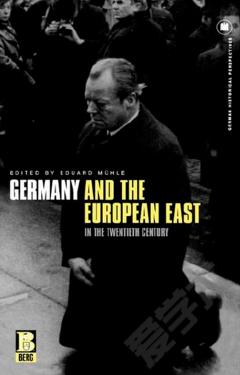Germany and the EuropeTwentieth Century
How did German society perceive the Europethe short twentieth century? What were the mental maps Germans constructed as their images of the European East? How did these images alter ovchanging political systems and did those mental perceptions influence political action and the relationship between Germany and Eastern Europe? Tackling questions such as these, this book looks at the complicated relationship between Germany and the European East. Politically significant, this relationship was often fraught with tension, always delicate and never easy. The book looks at the social, cultural and political contexthe German image of tthe Weimar Republic, the Third Reich and the Federal Republic. In addition, it charts the mental masociety constructed with respect to single constituent parts of Eastern Europe, such as Czechoslovakia, Poland, the Baltic States and the Soviet Union. The contributors consider how the relationship was transformhostility to one more conciliatory in character by the end of the twentieth century.
{{comment.content}}








 京公网安备 11010802027623号
京公网安备 11010802027623号